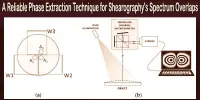Definition of Rotation –
For much of human history, people believed Earth to be flat. We now know better. But if Earth were flat, the way we experience day and night, as well as seasons, would be vastly different than it is. Earth rotates on its axis as it revolves around the Sun.
Earth rotates about its axis at approximately 15 angular degrees per hour. Rotation dictates the length of the diurnal cycle (i.e, the day/night cycle), creates “time zones” with differing local noon’s, and also causes the apparent movement of the Moon, stars, and planets across the “celestial sphere”. The rotation of Earth is eastward (from west to east) making the apparent rotation of the celestial sphere from east to west.
A rotation is a circular movement of an object around a center of rotation. If three-dimensional objects like earth, moon, and other planets always rotate around an imaginary line, it is called a rotation axis. The axis passes through the body’s center of mass, the body is said to rotate upon itself or spin.
For one thing, a flat Earth would experience the same temperatures across its surface; the equatorial regions would have the same temperatures as the poles. But because our planet is spherical, the amount of radiation absorbed at the equator is greater than at the poles.
There are a couple of reasons for this. First, the high angle of incoming radiation at the equator, which tapers off to be at its lowest at the poles, where the radiation hits at a lower angle. But remember that our planet is also not sitting still. It rotates about a central axis, much like a spinning toy top. One full spin happens in 24 hours and is the reason why we experience day and night. No matter where on the planet we are, we will experience some daytime and nighttime. This rotation also causes Earth’s atmosphere to flatten, ever so slightly, much the same way a pizza chef can make a ball of dough flatten into a disk by spinning it in the air.
The spinning of the Earth around its axis is called ‘rotation’. The axis has an angle of 231/2∘ and is perpendicular to the plane of Earth’s orbit. This means, Earth is tilted on its axis, and because of this tilt, the northern and southern hemispheres lean in a direction away from the Sun. The rotation of the Earth divides it into a lit-up half and a dark half, which gives rise to day and night.
Actually, Rotation is –
- Earth’s rotation or Spinning on its the axis (23.5 degrees)
- Causes day or night
- Time for one rotation is about 24 hours.
- Spins counterclockwise
The rates of rotation and revolution are functions of a planet’s mass and orbital position. For example, the mass of Jupiter is approximately 317.5 times Earth’s mass and the rotation time (the time for Jupiter to revolve once about its axis) is approximately nine hours.
Definition of Revolution –
Revolution is often used as a synonym for rotation. However, in many fields like astronomy and its related subjects, revolution is referred to as an orbital revolution. It is used when one body moves around another while rotation is used to mean the movement around the axis. For example, Moon revolves around the Earth, and the Earth revolves around the Sun.
Revolution is –
Orbit: Earth’s path as it revolves around the sun.
- Revolves in an oval shape called an ellipse.
- A revolution or orbit is the time it takes for the earth to make one complete revolution around the sun.
- Time for one revolution = 365.25 days or one year.
- The speed of the earth’s revolution is 68,000 miles per hour.
Earth takes approximately 365.25 days to complete one revolution around the Sun in a slightly elliptical orbit with the Sun at one focal point of the ellipse. The revolution speed of the earth is 30km.s-1. Ranging between the extremes of perihelion (closest approach) in January and aphelion (most distant orbital position) in July, Earth’s orbital distance from the Sun ranges from approximately 91.5 to approximately 94 million miles (147–151 million km), respectively. Although these distances seem counterintuitive to residents of the Northern Hemisphere who experience summer in July and winter in January the seasons are not nearly as greatly affected by distance as they are by changes in solar illumination caused by the fact that Earth’s polar axis is inclined 23.5 degrees from the perpendicular to the ecliptic (the plane of the solar system through or near which most of the planet’s orbits travel) and because the Earth exhibits parallelism (currently toward Polaris, the North Star) as it revolves about the Sun.
The sun constantly floods the Earth with radiation: light, heat, radio waves, ultraviolet waves, and all wavelengths in between. This radiation travels 92,960,000 miles, and the amount is fairly consistent, even though the sun goes through cycles of its own. But once it reaches Earth, what happens to that radiation is not actually very consistent across the planet. Case in point: some parts of Earth are cold, some are hot, and our seasons mean that different parts of the Earth are heated more or less at different times.
Even though the temperature fluctuates slightly during Earth’s orbit, these differences have nothing to do with our distance from the Sun. Our planet’s seasons and climates can be attributed to the fact that Earth rotates in motion about its central axis and moves in the orbital revolution when it travels around the Sun.
At the extreme of the solar system, Pluto, usually the most distant planet (i.e., at certain times Neptune’s orbit actually extends farther than Pluto’s orbit) takes approximately 247 Earth years (the time it takes the Earth to revolve about the Sun) to complete one orbital revolution about the Sun.
Rotation, revolution, polar tilt, parallelism, and Earth’s oblate spheroid shape combine to produce an unequal distribution of solar energy, the changing of seasons, the changing lengths of day and night and influence the circulation of the atmosphere and oceans. In addition to Earth’s rotation about the Sun, the solar system is both moving with the Milky Way galaxy and revolving around the galactic core.
Information Sources:
















